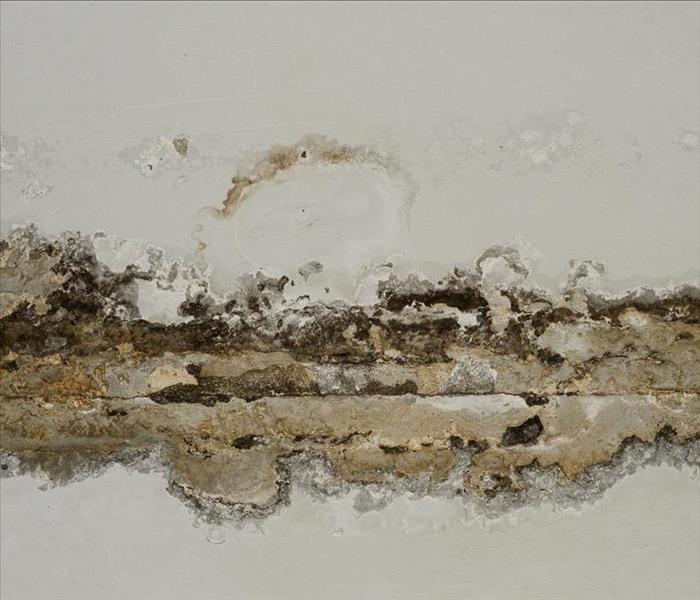Black Mold and Secondary Water Damage
10/6/2021 (Permalink)
An emergency pipe burst or trouble along the sewer line can quickly put the brakes on your daily operations. Your quick efforts to deal with the source of trouble, to remove the water, and to thoroughly dry your facility can prevent a lot of further problems. Unfortunately, it is possible for water to soak into carpeting or drywall and for humidity to build-up, allowing for the growth of black mold and other forms of mildew.
Dealing With Black Mold and Other Damage
The first step in tackling secondary damage from any type of water leak or flooding is understanding the problem. Learn as much as you can about the types of damage you can expect:
- Mold growth
- Rotting materials
- Peeling vinyl and paint
- Warped wood
- Compromised electrical wiring
- Corrosion and rust
As you come to fully understand the havoc caused by hidden pockets of moisture and high humidity, you're better prepared to aggressively target those problem areas.
Understanding the Causes of Further Damage
One of the main reasons properties suffer from black mold and other forms of damage are that flooding, leaks, or spills weren't properly mitigated the first time around. Certified cleanup and mitigation professionals are trained to prevent secondary harm, protect your building from lasting damage, and save you a lot of money in ongoing repair costs.
As a property owner, you may be a fastidious cleaner with a determination to properly repair and clean your facility. However, there are several areas where moisture builds without giving notice of the trouble brewing:
- Humidity buildup in the air conditioner
- Damaged appliances with hidden leaks
- Hidden moisture beneath or behind surfaces
It isn't uncommon for property owners to thoroughly clean and dry their buildings, only to discover later on that damage, such as mold growth
Taking Action Immediately
It doesn't take long for water to cause a lot of expensive damage. It is vital that you act immediately for the protection of your building. This means shutting off the main source of water, contacting cleanup crews right away, and getting all available hands involved in the cleanup. If it's possible to remove carpets from the floor, you may prevent an expensive loss of flooring.
Avoiding Secondary Problems
In addition to hiring professionals to help you recover from water damage, there are steps you can take to prevent further trouble. Once you've dealt with the immediate flow of water, open doors and windows to provide thorough ventilation. Remove water and water-logged furniture, equipment, and belongings as quickly as possible. If it's safe to use the electricity in your building, set up fans in the affected area. Be sure that there's a consistent flow of air through unaffected rooms so that humidity doesn't build up and cause new damage.
For the best results, choose a Park City, UT, professional company to deal with water damage before your experience any type of trouble. This proactive step ensures that you or your employees know who to call, so professionals arrive as soon as possible. The better you understand black mold and other secondary harm, the better able you'll be to take prompt action and avoid a lot of expensive damage.





 24/7 Emergency Service
24/7 Emergency Service
